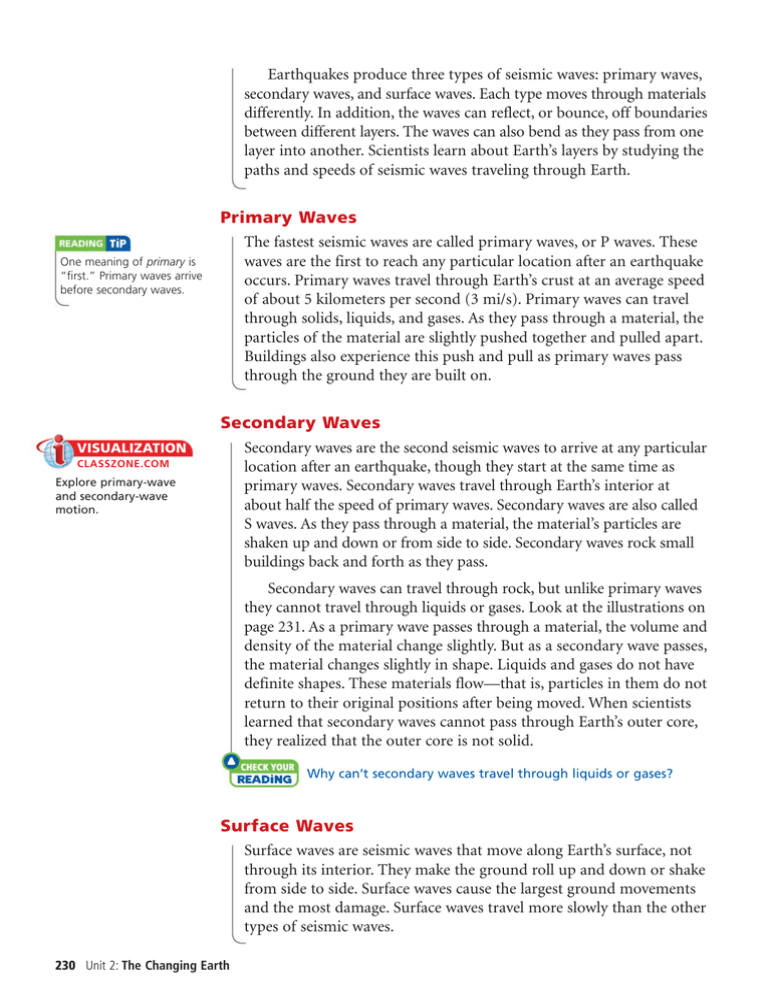Primary Waves Secondary Waves Surface Waves
advertisement

Earthquakes produce three types of seismic waves: primary waves, secondary waves, and surface waves. Each type moves through materials differently. In addition, the waves can reflect, or bounce, off boundaries between different layers. The waves can also bend as they pass from one layer into another. Scientists learn about Earth’s layers by studying the paths and speeds of seismic waves traveling through Earth. One meaning of primary is “first.” Primary waves arrive before secondary waves. VISUALIZATION CLASSZONE.COM Explore primary-wave and secondary-wave motion. Primary Waves The fastest seismic waves are called primary waves, or P waves. These waves are the first to reach any particular location after an earthquake occurs. Primary waves travel through Earth’s crust at an average speed of about 5 kilometers per second (3 mi/s). Primary waves can travel through solids, liquids, and gases. As they pass through a material, the particles of the material are slightly pushed together and pulled apart. Buildings also experience this push and pull as primary waves pass through the ground they are built on. Secondary Waves Secondary waves are the second seismic waves to arrive at any particular location after an earthquake, though they start at the same time as primary waves. Secondary waves travel through Earth’s interior at about half the speed of primary waves. Secondary waves are also called S waves. As they pass through a material, the material’s particles are shaken up and down or from side to side. Secondary waves rock small buildings back and forth as they pass. Secondary waves can travel through rock, but unlike primary waves they cannot travel through liquids or gases. Look at the illustrations on page 231. As a primary wave passes through a material, the volume and density of the material change slightly. But as a secondary wave passes, the material changes slightly in shape. Liquids and gases do not have definite shapes. These materials flow—that is, particles in them do not return to their original positions after being moved. When scientists learned that secondary waves cannot pass through Earth’s outer core, they realized that the outer core is not solid. Why can’t secondary waves travel through liquids or gases? Surface Waves Surface waves are seismic waves that move along Earth’s surface, not through its interior. They make the ground roll up and down or shake from side to side. Surface waves cause the largest ground movements and the most damage. Surface waves travel more slowly than the other types of seismic waves. 230 Unit 2: The Changing Earth




